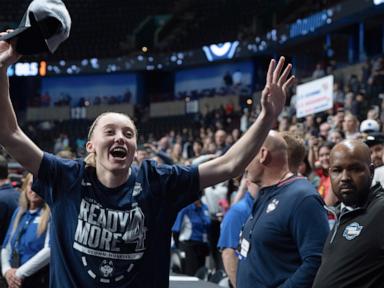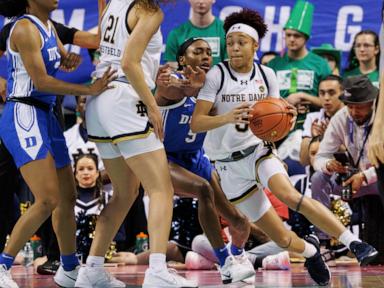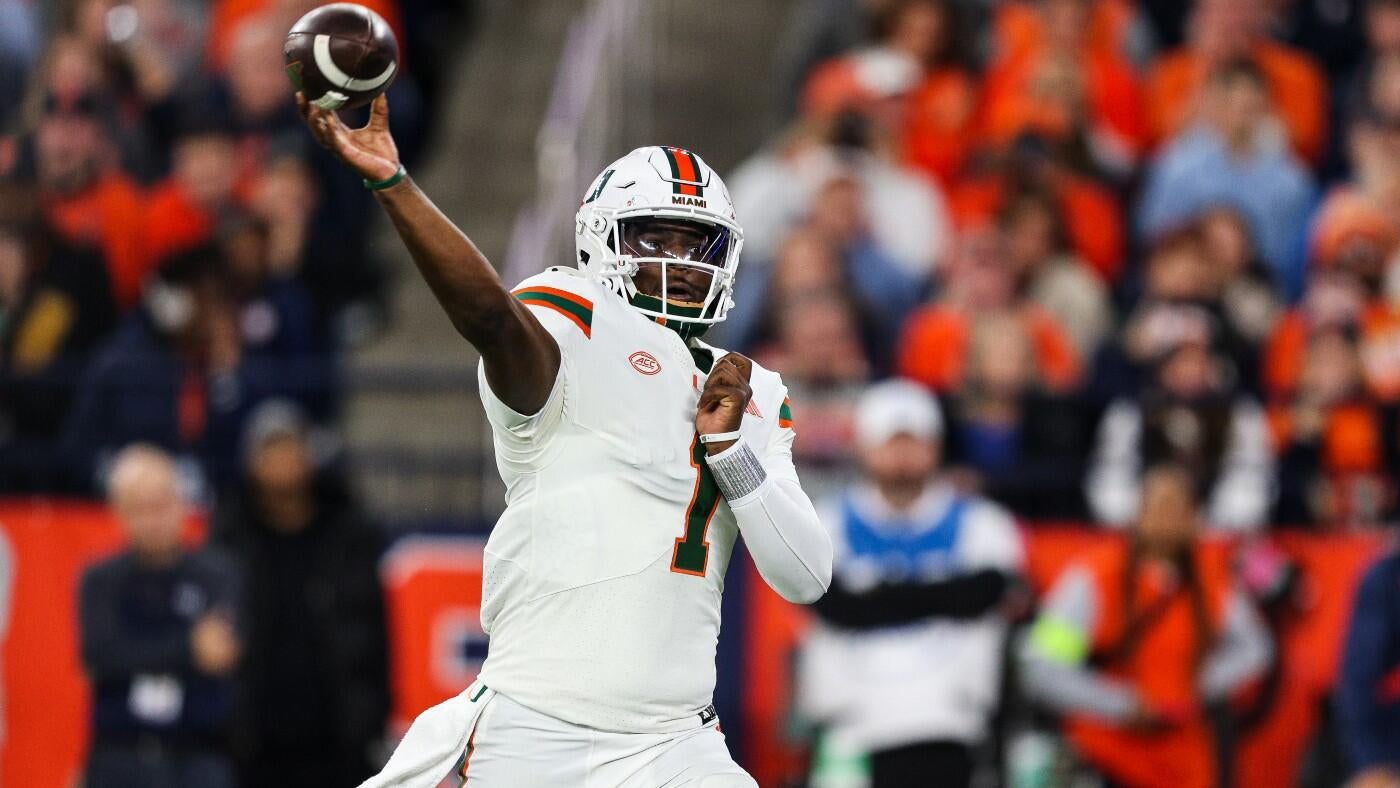Paige Bueckers is widely expected to become the first WNBA No. 1 overall draft pick from the University of Connecticut since Breanna Stewart nine years ago. Both became can’t-miss stars in college, both are UConn icons, both went to four Final Fours.
Stewart did it while making nothing. Bueckers, who has UConn in the Final Four for the second straight year, has done it while making millions. And she's far from the only one cashing in right now.
There’s no one-and-done path to the WNBA for women’s players like there is for men, who can jump to the pros after one year of college regardless of age. Duke's standout freshman, Cooper Flagg, for example, is expected to go No. 1 in the NBA draft and he just turned 18 in December.
The NBA and WNBA have different rules regarding draft eligibility. For years, that impeded how and when women’s players could start making money. The name, image and likeness era of college sports has changed just about everything, leveling the playing field in some respects for female athletes like Bueckers and allowing her to have deals with Nike, Gatorade and other sponsors while still wearing UConn colors.
“I think Paige is the poster child for how it’s supposed to be,” coach Geno Auriemma said. “That’s the way it’s supposed to work. She came out of high school at a time when people weren’t just getting paid to play. … She made a name for herself and set a standard for exactly why you’re supposed to be able to appreciate this stuff. You go to college. You’re the best player in the country, and everybody wants to be associated with you, and the school doesn’t give you a dime.”
To jump to the WNBA draft, players must either be a senior with all college eligibility exhausted or turn 22 in the draft year and renounce any remaining eligibility.
Yet there is no clamoring to change the women’s rules because, frankly, it wouldn’t make much sense under the current salary structure. The No. 1 pick in this year’s NBA draft will make somewhere around $13.8 million in his rookie season. The No. 1 pick in this month’s WNBA draft will make $78,831 in her rookie season.
Smart business for women's players to stay in schoolStaying in school isn’t a bad thing for women’s players. It’s smart business. NIL deals will follow many of them to the WNBA. But the pro check isn’t exactly a game changer for those at the top of the women’s game. The top current WNBA base salary is around $242,000, though that's expected to increase with the recent financial boom in women's sports.
Former Miami guards Haley and Hanna Cavinder became the first faces of the NIL era in college sports when it started on July 1, 2021, while they were still at Fresno State. They were immediately featured on a billboard in Times Square, the new faces of Boost Mobile. College sports were immediately changed.
The Cavinder twins have built a multimillion-dollar fortune and have more than 7 million followers across their Instagram and TikTok accounts. They’ve never confirmed actual numbers, but it's reasonable to believe the Cavinder twins are among the top-paid college athletes given both their earnings and equity stakes in various companies. Their college careers ended last month.
“I think we were pretty naive in the beginning with it, honestly,” Haley Cavinder said. “To be transparent, I don’t think Hanna and I really knew. We had talks of what NIL was, and I always saw tweets about it. But I never really envisioned myself getting ...









